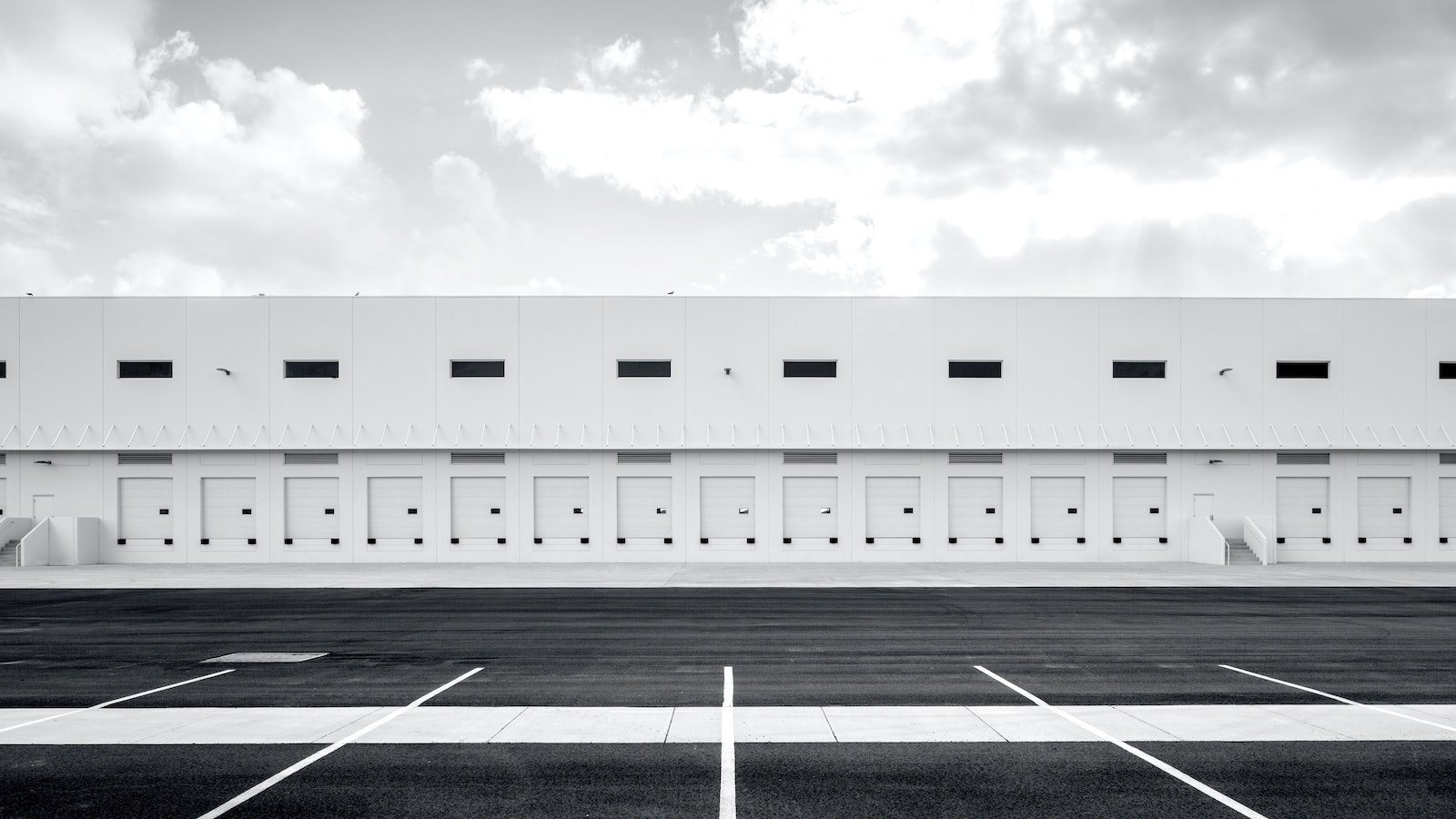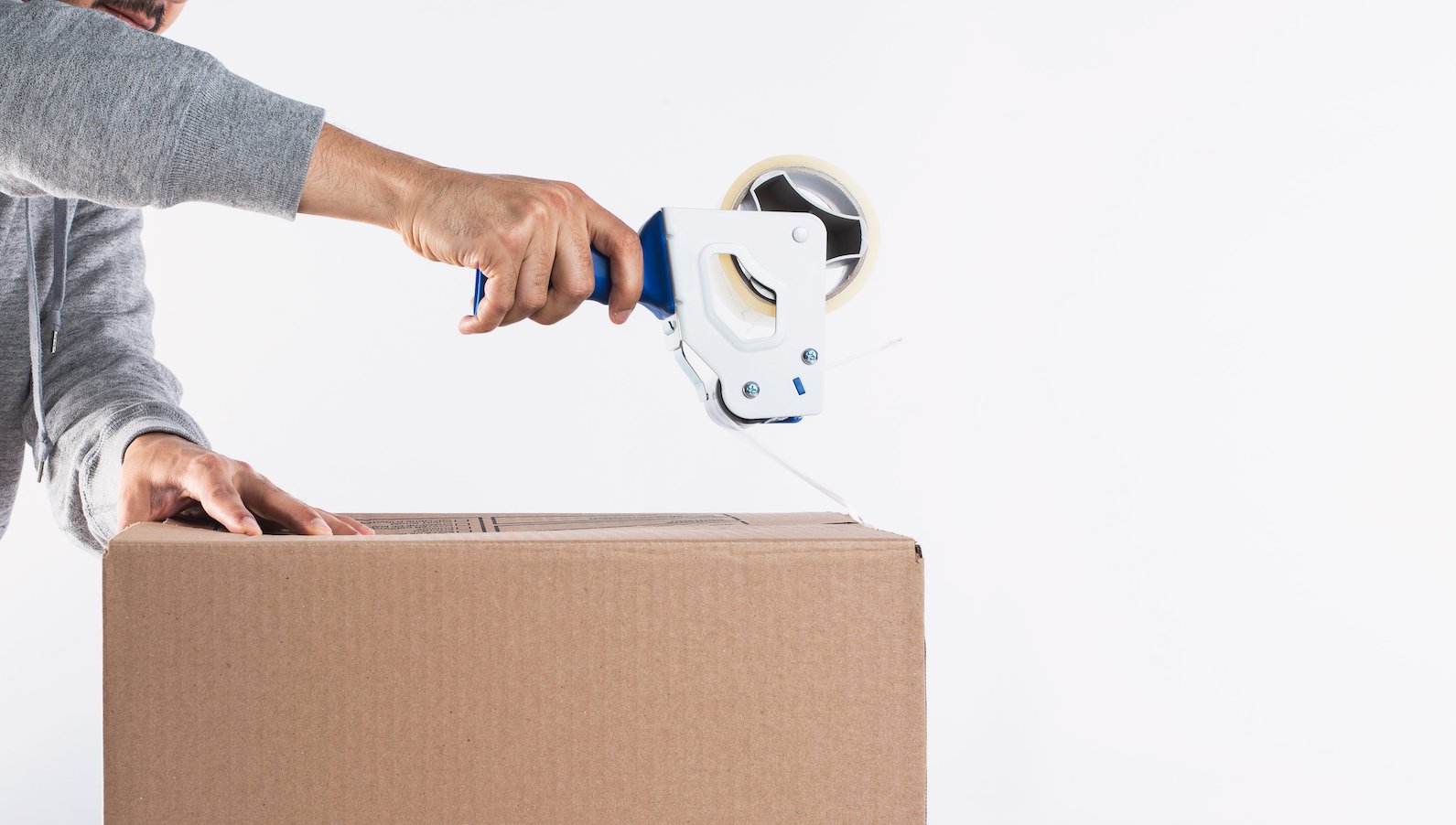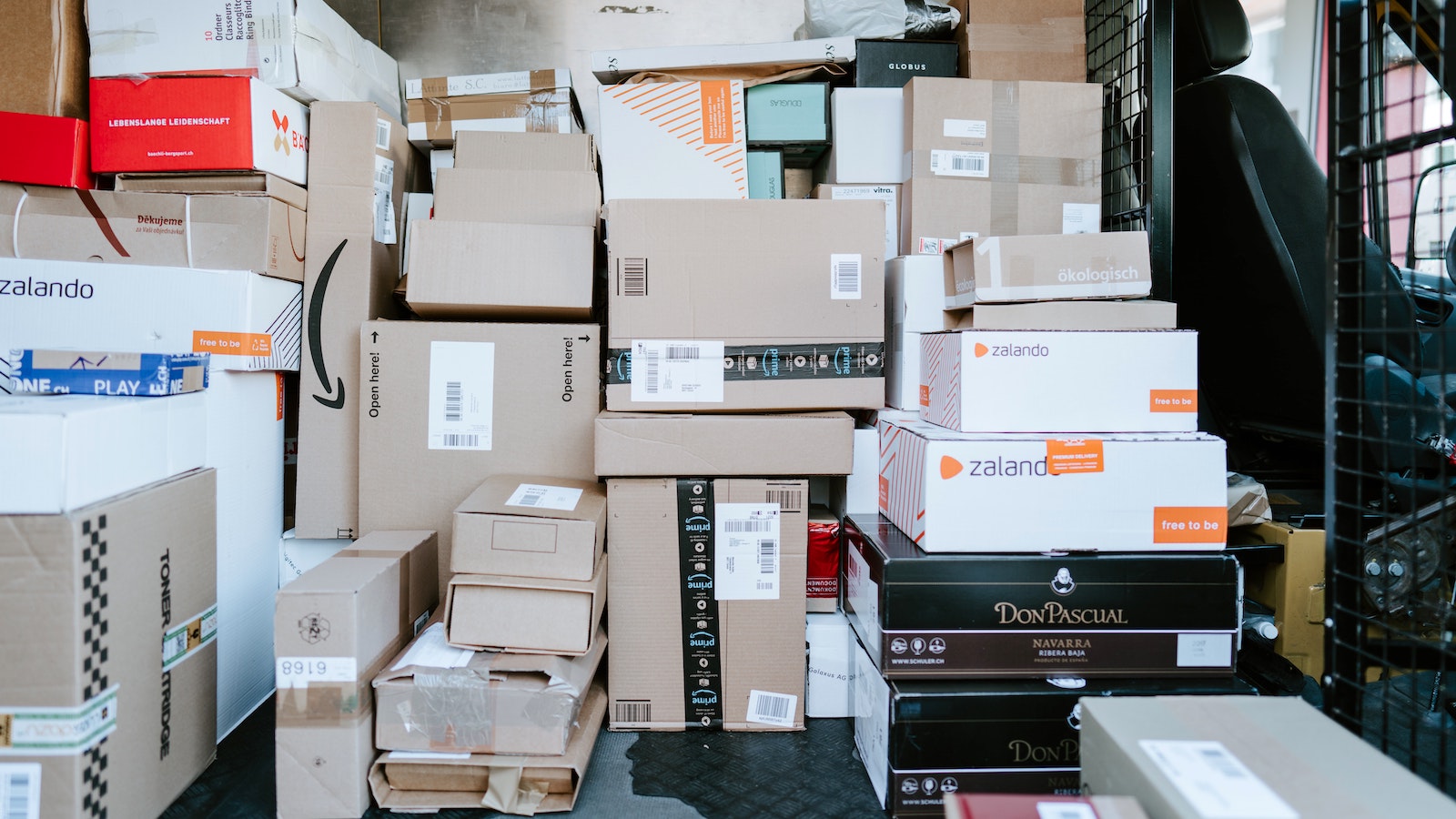Table of Contents
** Minutes
How logistics systems work in the ecommerce supply chain
8 ways you can improve the efficiency of your logistics systems
With so much on their minds, it can be tempting for ecommerce merchants to approach logistics management with the mindset of “if it isn’t broken, don’t fix it” — that is, as long as orders are completed, then their backend logistics are good enough and improvements to its functionality can be afterthoughts.
But if your goal is to build a business that is scalable and profitable long-term, you’ll need logistics that are more than just “good enough.”
To support growth and survive periods of high demand, merchants need to optimise the logistics systems within their supply chain for peak performance. By honing the efficiency of their logistics systems, retailers can:
- Improve the speed and ease of order fulfilment.
- Increase customer satisfaction.
- Ultimately transform their operations from a cost centre into a revenue driver.
In this article, we’ll cover what logistics systems are, practical strategies for improving the logistics systems in your ecommerce supply chain, and how ShipBob’s best-in class fulfilment and logistics services and tech stack can turn your logistics systems around in time for the holidays.
What are logistics systems?
Logistics systems are networks of processes and functions that come together to physically move product through a supply chain, and ultimately deliver orders to customers.
Any activity that helps move an order through its lifecycle — from when an order is placed to its arrival on the customer’s doorstep — is part of a logistics system. Activities like order management, inventory storage, warehouse management, picking, packing, and shipping are all involved in logistics systems, and each plays a role in the flow of goods from manufacturer to retailer to customer.
How logistics systems work in the ecommerce supply chain
Within your ecommerce supply chain, 3 different logistics systems work together to streamline the flow of goods from suppliers all the way to end users. Optimising each of these systems ensures that your lean supply chain runs smoothly, so that your customers can receive the right order at the right time at the right price.
Procurement
Before a customer even places an order, merchants have logistics systems in place for purchasing and receiving finished goods from their supplier or manufacturer. Also known as procurement, this process includes activities such as submitting purchase orders, material handling, and transporting the finished goods to the retailer’s warehouse(s). Nowadays, many retail businesses use e-procurement systems to optimise their purchasing processes and improve efficiency in their supply chain management.
As the first phase in the supply chain, procurement is as important to master as it is tricky. How a company procures their supply affects the efficiency, cost, functionality, and timing of every activity downstream; so in order to set their supply chains up for success, retailers must find a flexible yet reliable supplier to partner with.
Forging and maintaining good relationships with the right manufacturers will better equip merchants to tackle the complexities of international fulfilment (such as customs, import duties, and VAT), choose how to allocate inventory, and meet ever-shifting customer demands.
Production
Once suppliers deliver finished goods to the retailer’s warehouse, the production logistics system handles warehouse receiving and processing, product sorting and storage, and order fulfilment.
This is a stage of the supply chain where errors are most easily made, so optimising the logistics systems supporting production can go a long way towards improving your order accuracy rate, saving time and increasing your distribution centre’s throughput.
Distribution
The last leg of the ecommerce supply chain is the distribution logistics system: the challenge of shipping orders from the warehouse to the customer’s doorstep. Delivering orders as accurately and quickly as possible is half the battle in meeting customer’s expectations — so by improving the efficiency of their distribution management systems, merchants can speed up their shipping and can set themselves apart from the competition.
To that end, many ecommerce retailers choose to partner with third-party logistics (3PLs) providers, LTL (less-than-truckload) couriers, or other professional shippers for their last-mile delivery. Depending on the partner, they may be able to trim costs through securing discounted bulk shipping rates, or offer expedited shipping to shorten delivery time.
8 ways you can improve the efficiency of your logistics systems
With so many moving parts in logistics systems, it can be difficult for logistics directors to know where or how to start optimising. For more comprehensive logistics solutions, many merchants choose to outsource backend operations to third-party logistics providers (or 3PLs).
The right 3PL partner is equipped with the fulfilment services, tech stack, best practices, and experience — all of which retailers would otherwise have to develop on their own — to provide merchants immediate benefits, as well as leaner, more cost-effective logistics systems in the long run.
However, if you’ve chosen to stick with self-fulfilment, there are a few strategies good 3PLs employ that you can implement in your daily operations to improve your logistics systems’ efficiency.
1. Implement an order management system
Order management systems give merchants instant visibility into all of their orders and allow them to manage those orders in real-time. Top-tier order management systems will even integrate directly with a merchant’s ecommerce platform, and utilise automation to further streamline order receiving, processing, and tracking.
By implementing an OMS, all the information you need to push orders through the supply chain quickly is at your fingertips and in one place. This consolidation saves time, reduces lost orders, and prevents procedural breakdowns during periods of high demand.
2. Invest in inventory management software
Managing inventory by hand means a lot more merchant hours spent on inventory counts and a lot more guesswork when it comes to stock levels and replenishment timing. To reduce opportunity costs and streamline the process, most modern supply chain management strategies include inventory management software, or IMS.
An IMS helps merchants locate and access inventory levels across warehouses and platforms at any given moment. With this information, you’ll have the accurate data and accompanying insights you need to avoid costly stockouts that slow down your order cycle, and maintain a healthy inventory turnover ratio.
3. Optimise warehouse management systems
Implementing a warehouse management system (or WMS) is an investment — but merchants quickly see returns on that investment in the form of increased operational efficiency, as WMSs automate tedious warehouse processes such as inventory tracking and picking.
This automation simultaneously cuts labour costs while reducing the number of mistakes you’ll spend valuable time and money correcting. Ultimately, investing in a WMS provides small business owners the infrastructure necessary to ramp up their growth now, and scale over time without slowing down or sacrificing quality.
4. Use automated picking systems
Almost every function in a retailer’s warehousing benefits from automation — and warehouse picking systems are no exception. Automating repetitive tasks like retrieving items across a warehouse and picking similar orders not only speeds up the fulfilment process, but also reduces the number of picking mistakes made, increasing your order accuracy rate and overall customer satisfaction.
5. Distribute your inventory
Depending on your order volume, splitting inventory across multiple, strategically-placed logistics centres can be one of the most effective means of speeding up your logistics system.
Rather than fulfilling all orders from a single warehouse (where order volume can quickly overwhelm capacity, clogging the supply chain), a distributed inventory model where each order is fulfilled and shipped from the fulfilment centre closest to its origin greatly reduces a retailer’s shipping costs.
This approach to fulfilment can be expensive to do on your own (and is a common benefit of working with a 3PL that has a network of fulfilment centres) but delivers the quicker, cost-effective shipping that customers today expect.
6. Leverage real-time data for your supply chain
Data is the foundation of any great ecommerce optimisation strategy, especially if that data is refreshed in real-time. Without on-demand data, merchants risk wasting time and resources guessing how best to optimise their logistics; with it, those same merchants can quickly ascertain where in the supply chain they can affect positive change.
By tracking metrics such as order destination, stock levels, inventory turnover rates, shipping times, and order accuracy in real-time, retailers will make more informed decisions while optimising and planning their logistics, and be able to measure and quantify their progress.
7. Choose faster shipping methods
In today’s ecommerce landscape, quick and efficient shipping isn’t a bonus; it’s the standard. Customers expect affordable shipping in 2-days, so it is more important than ever for retailers to find ways to streamline their shipping logistics.
While last-mile delivery ultimately depends on the carrier and service you choose, partnering with a logistics service provider gives retailers another avenue for optimisation. Most 3PLs will help work out the most efficient ways to ship your orders (whether it’s using a transportation management system or TMS, or proprietary solution), and negotiate with couriers to secure bulk shipping discounts that they then pass on to their customers.
8. Find tech that easily integrates with your supply chain
Technology should make managing logistics simpler, not complicate it. So when optimising your supply chain, you should choose logistics management software and platforms that are fully integrated with your existing tech stack.
Intuitive programs that seamlessly link to your online store, apps, and other services keep information in one accessible location, prevent the loss of critical data, and save you the hassle of juggling multiple platforms.
How ShipBob improves your logistics
While logistics systems are usually cost centres, the right 3PL partner can optimise your ecommerce logistics so that those systems actually drive revenue and support a business’s growth. As a tech-enabled 3PL, ShipBob specializes in transforming small- to mid-size ecommerce businesses’ logistics systems from bottom-line killers into competitive advantages.
Here are some of the ways ShipBob improves supply chain efficiency to help retailers reach their goals faster, keep their customers satisfied, get back precious time, and grow their brand.
Keep logistics costs low
Logistics systems should be optimised for cost as well as speed. When merchants partner with ShipBob, our team of experts take over the entire receiving, storage, fulfilment, and shipping process — meaning that retailers are no longer responsible for hidden expenses such as having a warehouse lease or repurchasing packing materials, and recoup the opportunity cost of their time.
Our transparent pricing structure helps prevent surprise fees, so that you can stick to your budget and avoid overspending on logistics.
One platform for all your logistics
ShipBob’s bespoke software includes an OMS, IMS, and WMS all in one intuitive platform. Using our dashboard, retailers can:
- Track and edit orders throughout the customer lifecycle
- View real-time counts.
- Set reorder point notifications.
- Monitor fulfilment and shipping times.
ShipBob’s dashboard also includes analytic reporting tools that provide retailers real-time data at a glance to facilitate the most accurate inventory and demand forecasting possible. ShipBob also links directly with major ecommerce platforms (among other tools) to seamlessly integrate and automate processes.
“ShipBob’s platform is easy to use and navigate, the interface is intuitive, and the analytics are very clearly laid out. I give ShipBob’s technology a 9/10.
Getting our WooCommerce shop integrated with ShipBob was easy, and it’s been fantastic to have; we had no problem with it. We can see our orders come in and get fulfilled in real time without any hiccups for the most part, which is great.
Our fulfilment is on autopilot. ShipBob saves us so much effort, and the opportunity cost savings has been substantial.”
Yannick Crespo, Co-Founder & President of Pot d’Huile
Warehouse automation
Automation helps keep labour costs down and order accuracy rates high; so ShipBob has sought to further optimise logistics operations by automating repetitive processes within our logistics systems. When an order is placed on your online store, it’s sent to ShipBob’s software, which automates order routing so that each order is pushed to the fulfilment centre closest to that order’s shipping destination.
During fulfilment, optimised picking lists are generated to group similar orders together and speed up picking, drastically reduce picking errors, and automatically update the inventory count in the merchant dashboard to avoid common mistakes associated with manual SKU tracking.
“My end goal when I started Drop FX was to create something that was fully automated, so I could focus on driving sales. I didn’t want to have to worry about inventory and distribution as much.
When I was gearing up to launch the business, I was looking for someone who would automate fulfilment for us. I chose ShipBob, and it turned out to be a very easy and scalable solution.”
Josh Hollings, Founder & CEO of Drop FX
Affordable shipping rates
ShipBob’s distributed inventory model with distribution centres in the US and abroad allow retailers to store their products closer to more of their customers, and offer better rates through its proprietary fulfilment software.
This approach shortens shipping times and reduces the number of high-cost shipping zones a retailer must ship to, even enabling 2-day ground shipping (which is more affordable than expedited air).
In addition to those cost-savings, ShipBob negotiates with couriers like FedEx and UPS to secure bulk shipping discounts, which we pass on to our customers. This way, small- to mid-size ecommerce businesses can delight their customers with 2-day shipping without breaking the bank.
“Luckily, ShipBob has fulfilment centres in major cities all over the US, so we can spread out our inventory across the country to reduce the shipping zones and costs associated with shipping orders to destinations that are far away.
In fact, we’ve distributed our inventory to all ShipBob fulfilment centres to be near our customers and joined ShipBob’s 2-day Express Shipping Program, which leverages ground shipping and is an inexpensive alternative to expedited air shipping.
The more fulfilment centres we have inventory in, the more potential shipping addresses we can offer this 2-day option to. And the more people that we offer the benefit of free 2-day shipping to, the more conversions we get.”
Founder of My Calm Blanket
Want to learn more? Readthis review to see how ShipBob’s logistics capabilities compare to other 3PLs.
Logistics systems FAQs
Here are our answers to ecommerce retailers’ top questions about logistics systems.
What are the main activities of logistics systems?
Logistics systems include activities necessary for moving inventory from the supplier or manufacturer to a warehouse, storing it until it is picked and packed, and shipped from the warehouse to the customer’s doorstep. Some of those activities are receiving inventory from manufacturers; sorting and storing it in distribution centres’ managing orders’ warehousing inventory’ picking, packing, shipping, and tracking orders; and last-mile delivery.
Can you outsource logistics systems for your store?
Yes. Outsourcing ecommerce logistics to a professional is a great way for small businesses to invest in their company’s future in terms of both quality and scalability. 3PLs like ShipBob are experts in order management, shipping, and every activity in between, and come with the best practices, tech stack, and resources to optimise your logistics operations from day one. In the long run, partnering with the right 3PL is one of the most cost-effective logistics solutions for small businesses, and will help you reach your goals more quickly.
Do better logistics systems improve the customer experience?
Yes. Honed and optimised logistics systems ultimately enable merchants to get a customer’s order to them more quickly — and the more smoothly an order moves through the different logistics systems, the more quickly it will get out of the warehouse and into the customer’s hands (not to mention, increasing the likelihood of the customer ordering again). More efficient logistics systems also result in fewer errors, meaning that customers get the accurate orders that they are expecting a higher percentage of the time.



